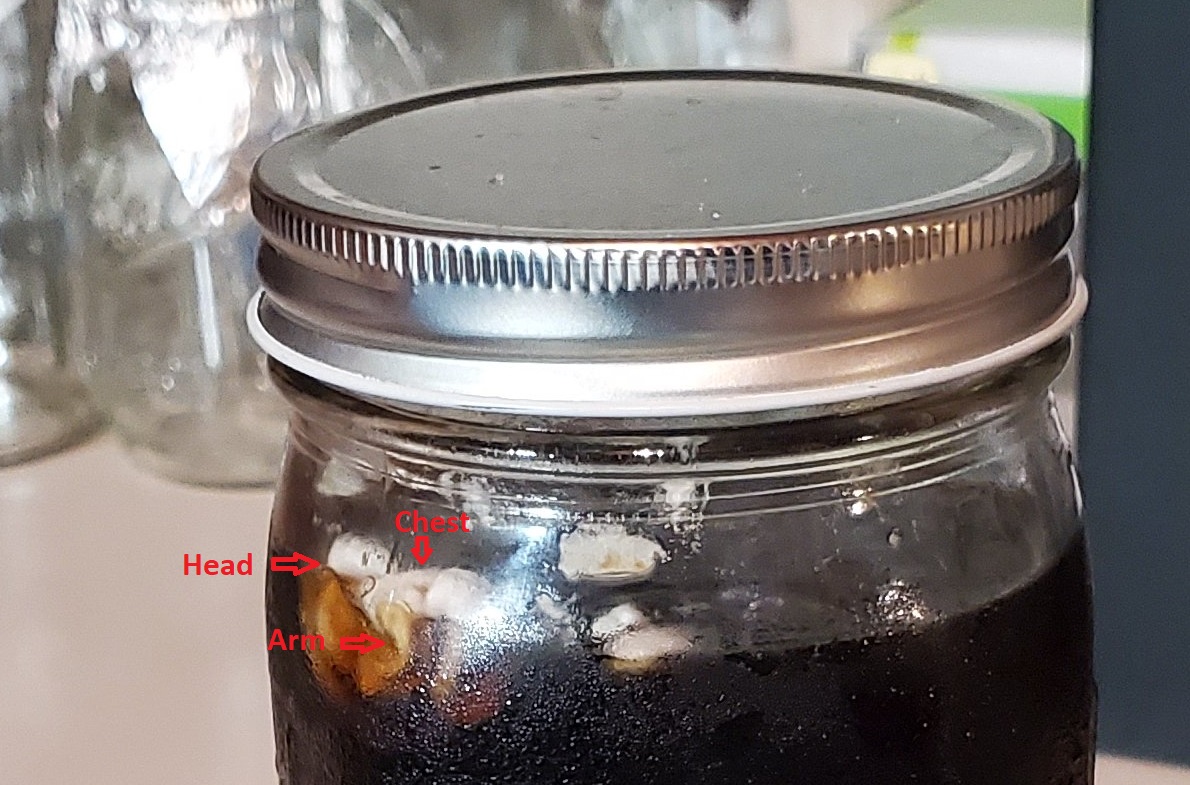- Joined
- Feb 16, 2012
- Messages
- 3,359
- Reaction score
- 4,256
- Location
- Either in the brewery or on the road
Had a "first" this morning when I headed downstairs to the brew area. I was going to make a starter yeast for an upcoming batch from a WLP-039 Nottingham I'd obtained from the Vault last Spring and harvested afterward. The 1st. generation fermentation was an Irish Red ale from 5/20/2020 that turned out quite good (still nursing the last of it from the kegerator).
I ranched this batch directly from the fermenter dump port following a closed transfer of the beer to a keg, into a previously sanitized and sealed Mason jar. The harvested yeast was/is trub-free and of uniform creamy consistency. It has been stored in the original harvesting jar under the dregs of the beer it was fermented under. The sealed, airtight jar has been kept in a 38F refrigerator since it was harvested until this morning. pH of the finished beer was 4.9, from my brew notes.
Here's what it looked like when I opened it to pour into the Erlenmeyer flask:


Clearly a colony of mold set up shop in the harvested sample. Should I dump it in disgust and despair? (I'm thinking "Hell, YES"). But my real question is how did it happen?
The yeast was harvested from a sealed fermenter from a successful fermentation that yielded very good beer, directlty into a sanitized jar through a sanitized dump valve and TC yeast harvester, refrigerated under it's original 4.5% ABV beer measuring pH 4.9.
I KNOW it happened. The question is HOW? Shouldn't the alcohol and/or the low pH have suppressed mold propagation? Could random spores have drifted into the jar or lid during the brief time they were open to the ambient room atmosphere?
I try to be thorough (without being analy obsessive) about sanitation and had just misted the jar and lid with StarSan prior to the transfer. I'll add, the lid looks like a Petri dish with an abundance of spores.
I've ranched yeast for several years, and even have 15-20 frozen samples, and have never had this happen before. Can anyone beer 'splain this to me?
I ranched this batch directly from the fermenter dump port following a closed transfer of the beer to a keg, into a previously sanitized and sealed Mason jar. The harvested yeast was/is trub-free and of uniform creamy consistency. It has been stored in the original harvesting jar under the dregs of the beer it was fermented under. The sealed, airtight jar has been kept in a 38F refrigerator since it was harvested until this morning. pH of the finished beer was 4.9, from my brew notes.
Here's what it looked like when I opened it to pour into the Erlenmeyer flask:


Clearly a colony of mold set up shop in the harvested sample. Should I dump it in disgust and despair? (I'm thinking "Hell, YES"). But my real question is how did it happen?
The yeast was harvested from a sealed fermenter from a successful fermentation that yielded very good beer, directlty into a sanitized jar through a sanitized dump valve and TC yeast harvester, refrigerated under it's original 4.5% ABV beer measuring pH 4.9.
I KNOW it happened. The question is HOW? Shouldn't the alcohol and/or the low pH have suppressed mold propagation? Could random spores have drifted into the jar or lid during the brief time they were open to the ambient room atmosphere?
I try to be thorough (without being analy obsessive) about sanitation and had just misted the jar and lid with StarSan prior to the transfer. I'll add, the lid looks like a Petri dish with an abundance of spores.
I've ranched yeast for several years, and even have 15-20 frozen samples, and have never had this happen before. Can anyone beer 'splain this to me?



